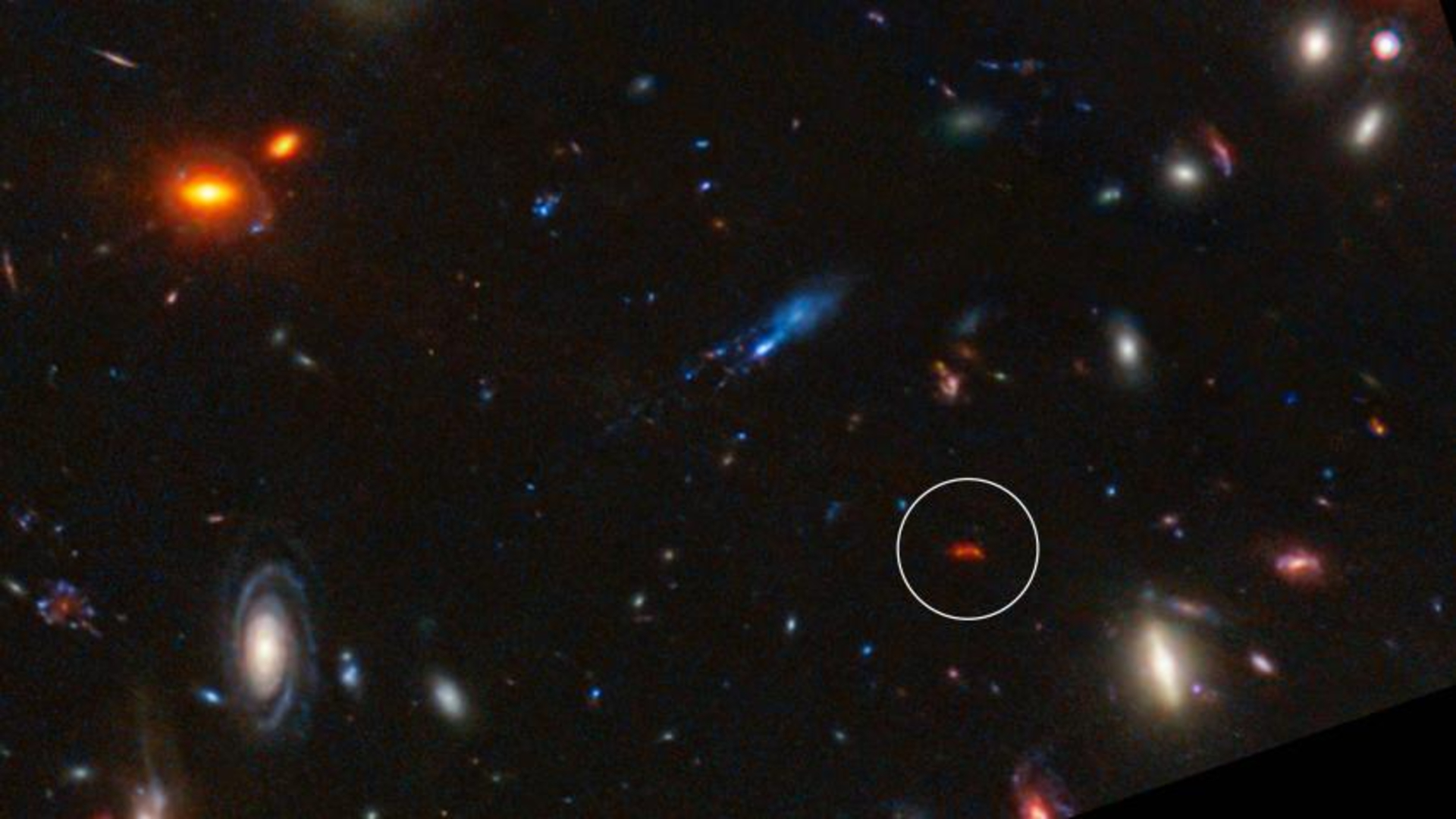Satellites track Hurricane Sally ahead of US landfall (and 5 other big storms on Earth)
Hurricane Sally is barreling towards land as five other storms swirl on Earth's surface, satellites have spotted from space.
As of Monday (Sept. 14), with data from NASA's Aqua satellite, Tropical Storm Sally was reclassified as a hurricane. The hurricane is moving over the north-central Gulf of Mexico today (Sept. 15) and is expected to continue moving towards Louisiana and make landfall sometime today (either during the afternoon or this evening). According to NOAA (National Oceanic and Atmospheric Administration), as of 8 p.m. EDT (2400 GMT) Monday, Sally was a Category 2 storm, had sustained winds of 100 mph (161 kph) and was moving at 5 mph (8 kph).
The storm continues to be monitored by the Atmospheric Infrared Sounder (AIRS) instrument on NASA's Aqua satellite, which launched May 4, 2002 to observe Earth as part of the Earth Observing System (EOS). In addition to Sally, five other storms are brewing on planet Earth — Sally, Paulette, Rene, Teddy and Vicky in the Atlantic Ocean, and Karina in the Pacific Ocean. This is the first time since 1971 that there have been five named storms at once in the Atlantic Ocean.
Related: No, we can't control hurricanes from space
NOAA's GOES-East geostationary satellite (formerly known as GOES-16) is also tracking the storms, monitoring how they're growing and moving and where they might be headed next. GOES-East orbits over 22,000 miles (35,405 kilometers) above Earth, keeping an eye on North America, Mexico, Central and South America, the Caribbean and the Atlantic Ocean stretching out to Africa.
In a tweet posted Monday, NOAA shared a video taken by GOES-16 of Hurricane Sally. In the video, you can see the hurricane's "bubbling clouds and #lightning," NOAA tweeted.
On Sept. 14, 2020, the #GOESEast satellite zoomed in on Hurricanes #Sally, near the Gulf Coast, and #Paulette, over the Atlantic. We can also see a blanket of hazy gray smoke from western #wildfires drifting over most of the country. pic.twitter.com/eHytjWqiq8September 15, 2020
Other satellites also continue to monitor the array of storms, including NASA-NOAA's Suomi NPP satellite, which monitors the weather so using its Visible Infrared Imaging Radiometer Suite (VIIRS). On Monday, VIIRS spotted Hurricane Paulette at nighttime (1:30 a.m. EDT; 0530 GMT), showing a clear image of the storm's eye. At that time, Paulette's large eye was approaching the island of Bermuda, for which there is a hurricane warning in effect, according to NASA.
Breaking space news, the latest updates on rocket launches, skywatching events and more!
TROPICAL UPDATE: As the sun sets over the East Coast this evening, @NOAA's #GOES16🛰️ is tracking the bubbling clouds and #lightning from #HurricaneSally. As of 8 pm EDT, #Sally had sustained winds of 100 mph (Cat. 2) and was moving WNW at 5 mph. Latest: https://t.co/VTAp4gGkHs. pic.twitter.com/76TxykrVMMSeptember 15, 2020
Yesterday, another storm made progress in the Atlantic as Tropical Depression Vicky strengthened into Tropical Storm Vicky. Aqua has been following the storm, showing that, as of Sunday (Sept. 13), the storm's coldest cloud top temperatures were as low as (or lower than) 63 degrees Fahrenheit (minus 53 degrees Celsius) in their centers. And, according to NASA, such cold temperatures could indicate the storm's ability to generate heavy rains.
Just last month, Jim Yoe, a scientist with NOAA's National Weather Service, told Space.com that NOAA was predicting this to be "an above average hurricane season." The Atlantic hurricane season, which stretches from June 1 to Nov. 30, is currently in full swing.
This year there is "an extremely high probability of having an active season," Yoe said. "The stage has really [been] set for having a lot of hurricanes for this year."
Email Chelsea Gohd at cgohd@space.com or follow her on Twitter @chelsea_gohd. Follow us on Twitter @Spacedotcom and on Facebook.

Chelsea “Foxanne” Gohd joined Space.com in 2018 and is now a Senior Writer, writing about everything from climate change to planetary science and human spaceflight in both articles and on-camera in videos. With a degree in Public Health and biological sciences, Chelsea has written and worked for institutions including the American Museum of Natural History, Scientific American, Discover Magazine Blog, Astronomy Magazine and Live Science. When not writing, editing or filming something space-y, Chelsea "Foxanne" Gohd is writing music and performing as Foxanne, even launching a song to space in 2021 with Inspiration4. You can follow her on Twitter @chelsea_gohd and @foxannemusic.

